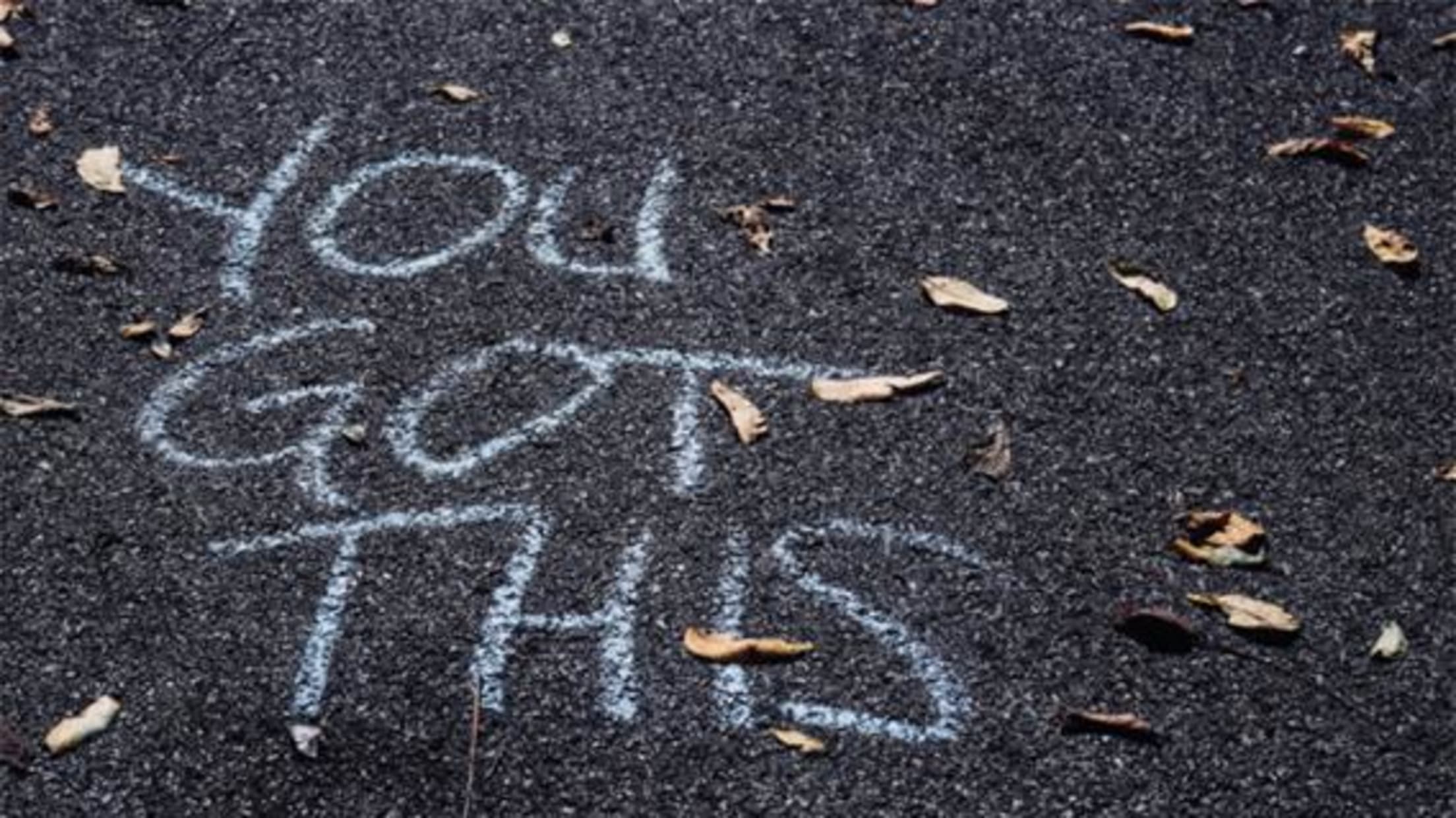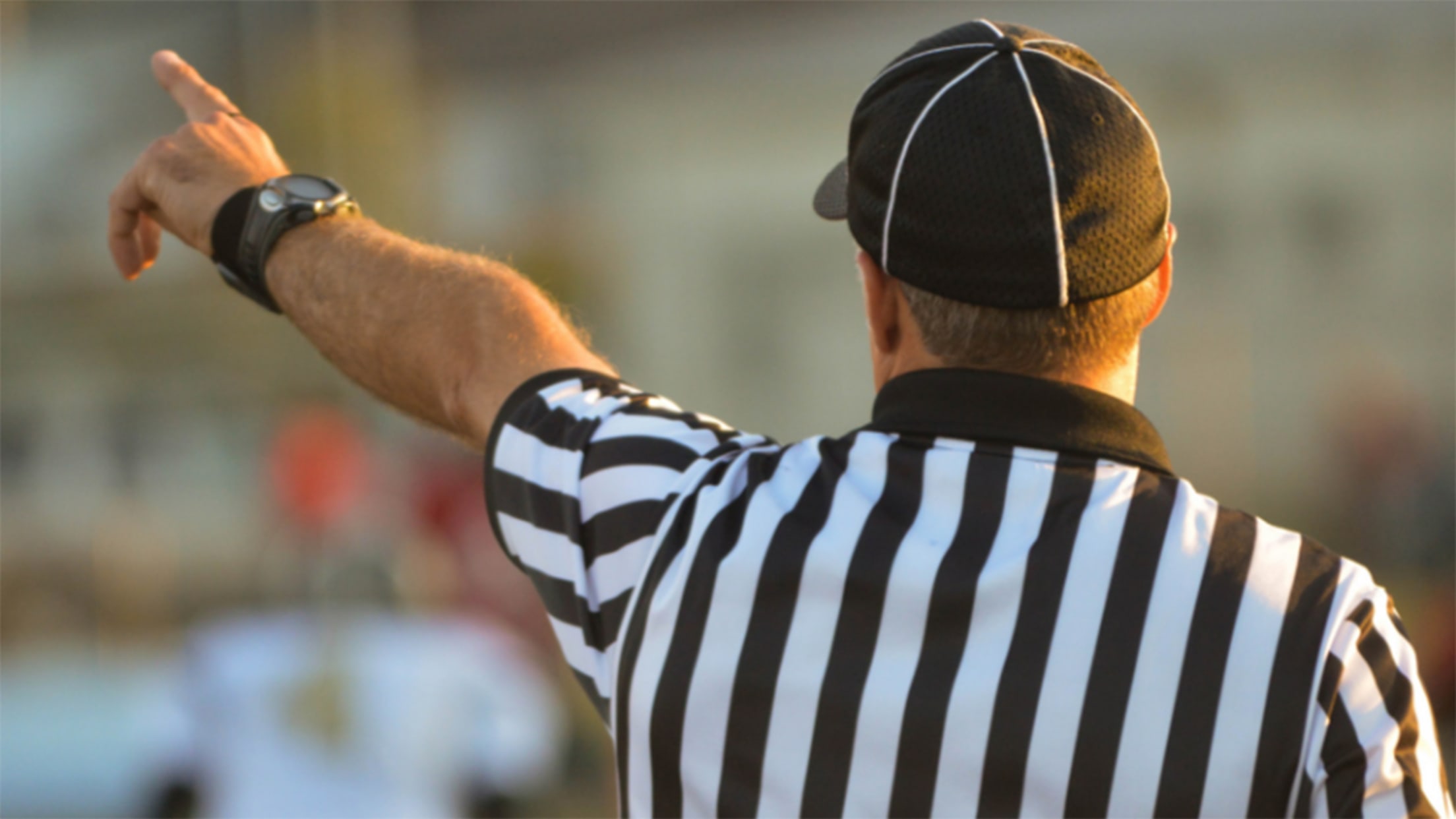TrueSport: February 2019

How to get back up after failure, the best way for coaches and parents to respond to bad calls, five pregame activities to boost sportsmanship and more this month from TrueSport.
Trending
Grit: How to get back up after failure
Failures are guaranteed in life and in sport, but often times, the way coaches and parents respond to failure will either crush a young athlete's confidence or inspire them to take advantage of a valuable learning moment.
To help kids develop greater resilience, perseverance and grit, it is important to incorporate the following practices to encourage young athletes to fail forward and use failures as a catalyst for learning and positive change.
Support an athlete's passion
Angela Duckworth, New York Times best-selling author of Grit: The Power of Passion and Perseverance, and Christopher H. Browne Distinguished Professor of Psychology at the University of Pennsylvania, define grit as "passion and perseverance for long-term and meaningful goals."

So, in order for your athlete to stick with a difficult activity, it has to be personally valuable. This means when your young athlete shows passion for an activity, encourage them to pursue it. If they are playing a sport they are not passionate about just to please parents, coaches or peers, they are more likely to quit in response to minor failures.
When athletes ask Coach Bill Curry, a 4-time NFL Champion and former Head Football Coach at the University of Alabama, about whether to stick with football, he asks, "What's in your heart?"
Grit, he also reasons, starts with passion. If a young athlete is passionate and ready to work hard, he should stick with it. In some cases, perseverance pays off. Even when it doesn't, athletes still learn valuable lessons - about themselves, teamwork, relationships and more.
Help athletes honor commitments
When kids struggle to learn a new sport or fail to meet expectations, they sometimes want to quit mid-season.
Coach Curry advises parents to help kids develop grit by encouraging them to finish out the season and honor the commitment they made to themselves and their teammates. "My first season of football I wanted to quit, but my father said I had to finish what I started," he remembers. "By the end of the season, it was the relationships with my teammates that made me fall in love with football."
Honoring commitments is an important life lesson that will benefit kids in all areas of life, and sticking it out for a season provides enough time to overcome initial hurdles to discover the aspects of a sport that do ignite an athlete's passion.
Don't rush to the rescue
Youth sports provide a great environment to learn how to deal with failure, but parents can hinder that process by rushing to rescue their child from adversity. It is important to help kids talk through problems and discuss potential solutions, but don't just tell them what they should do. Let them figure it out and do the work.
Duckworth states, "A degree of autonomy during the early years is also important. Longitudinal studies tracking learners confirm that overbearing parents and teachers erode intrinsic motivation. "
She adds that "grit grows as we figure out our life philosophy, learn to dust ourselves off after rejection and disappointment, and learn to tell the difference between low-level goals that should be abandoned quickly and higher-level goals that demand more tenacity. The maturation story is that we develop the capacity for long-term passion and perseverance as we get older."
Give constructive feedback
Coach Curry emphasizes that supporting a player doesn't mean a coach or parent can't call athletes out for failing.
"Everything starts with relationships," Curry says. "When you have a trusting and caring relationship with a person, you can push them hard and they know it's because you believe in them. Those players will give you all they have."
But, he adds, "Negative responses to negative performances can crush a kid when it comes from a coach or parent who hasn't built a strong relationship first. And those kids never forget it."
Failing is part of life. It's our job to encourage grit as a character strength in developing athletes.
Watching your young athletes fail is challenging, but stepping into your support role as coaches and parents to turn that failure into a teachable moment is the most beneficial thing you can do for your athlete.
"I'm an expert at failing. I've done lots of it as an athlete, a coach and a person," Curry summarized. "But every failure makes you better, and a big part of our jobs as coaches and parents is to help kids turn failures into successes."
References:
Duckworth, Grit: The Power of Passion and Perseverance (New York: Scribner, 2016).
Parents
Bad call: The best way for coaches and parents to respond to bad calls
Bad calls happen. They happen in youth sports, high school sports, professional sports and the Olympics. Of all the places where officiating mistakes happen, youth sports are probably where they matter the least. But, it's on the sidelines of kids' games that we often see parents and coaches losing their cool.
Before we look at three categories of bad calls and how to deal with them, it is crucial for all parents and coaches to remember that the referees in youth sports are often volunteers. Even those who are paid are likely refereeing out of their love of the sport rather than the compensation. They are human. They make mistakes. They have feelings.
Making accurate calls is important, but if we are looking to youth sports to teach kids valuable lessons about sportsmanship, responsibility, competition and handling adversity, then it is important to realize that missed calls play a necessary role in teaching those lessons.

Let's look at three categories of officiating errors and how parents and coaches can best respond to them.
The referee missed it
A referee can't be everywhere at once, and there is no instant replay in youth sports. Sometimes things like a handball in soccer, a travel in basketball or an out-of-bounds in field hockey simply get missed because the referee wasn't in a position to be able to see it. Play continues with this type of error even though the correct call would have resulted in a stoppage of play. The players involved often know the error occurred, and parents and coaches who happened to be in the right position to see the foul know it occurred. So what should happen next?
Coaches:
Don't overreact to individual instances of missed calls due to unseen infractions. If it's becoming a consistent problem, either in your team's favor or not, have a calm conversation with the referee during a stoppage in play. Referees want to perform as well as they can, and pointing out a consistent problem can help the referee address it.
Your players' attitudes and actions will reflect your response to missed calls. If you express anger or frustration, they are likely to respond that way as well, on the sidelines and on the field.
When talking to your players, use this type of missed call as an opportunity to point out that things don't always go your way, but you have to keep playing and focus on what you can control. Another way to approach it is to encourage players to perform their best so the game is not close enough that a missed call would affect the outcome.
Parents:
Try not to worry about it and absolutely don't yell about it. Your job on the sideline is to encourage your athlete and all the athletes on the field or court. You're there to enjoy watching your child. You'll probably notice missed calls, but let the coaches and officials handle it.
When your child expresses frustration about missed calls, either during a break in play or after the game, you have the same opportunity as the coach to reinforce the notion that life isn't always fair, things don't always go your way, and you can only control your own play.
The referee misjudged it
This category of officiating errors focuses on infractions the referee sees, but misjudges in terms of severity. For instance, a shove, kick to the shins or elbow to the ribs might look pretty benign from one angle, but very rough from another. Compared to missed calls, misjudged calls often have an impact on player safety.
In some cases, referees may be too lenient and allow rougher play that endangers athletes. In other cases, referees are hypersensitive to contact and call fouls that seem unnecessary.
Coaches:
If the official is being too permissive of rough play and your players are at risk, speak to the official immediately to encourage them to be more proactive about controlling aggressive play. You can also adjust your player matchups or game strategy, if possible, to reduce the frequency of contact with players who are being aggressive.
On the other hand, if the official is highly sensitive to infractions, work with your players to be even more conscious of how they're playing. This can be a useful lesson on adapting to the situation.
Parents:
Watching someone be rough with your kid is hard to handle calmly, but losing your temper isn't going to help either. Let the coaches and referees handle it on the field, and if you feel the need to make your voice heard, talk to your team's coach. Avoid the urge to yell at the ref, and absolutely refrain from yelling directly at the opposing player.
If your player or team is getting called for infractions based on a highly sensitive referee, use the opportunity to reinforce the idea that you have to learn how to adapt to the situation and find a way to perform your best.
The referee got mixed up
Sometimes officials make mistakes, like losing track of the number of players on the field, counting the incorrect number of strikes or balls, or giving the ball to the wrong team. It happens. This is when the old adage, "It takes a village…" comes into play.
Coaches:
If you notice the error, bring it to the official's attention so it can be corrected. Particularly in youth sports, these situations are best handled with a sense of humor. In competitive club and school sports, there may be a more formal process for correcting officiating errors.
Parents:
If you notice the error, bring it to the coach's attention instead of directly confronting the officials. The coach is the person designated to speak and make decisions on the team's behalf. And in a loud environment with voices coming from all directions, the coach is the person an official will pay attention to.
Takeaway
Youth sports, even competitive youth sports, are supposed to be a positive experience for young players. Accurate officiating is important, but the big picture lessons that can be learned through youth sports participation are achieved through wins and losses, good calls and bad.
Coaches
Setting the stage: Five pregame activities to boost sportsmanship
Although some pre-game traditions have come under scrutiny in recent years, there is still no better time to set the tone for good sportsmanship in youth sports than in the minutes before a kick off, tip off or first pitch.
The challenge, however, is to make this activity more engaging than a half-hearted cheer. Making pre-game acts of sportsmanship mandatory often diminishes genuine actions to something done just to appease parents and officials.
Pre-game rituals should go beyond just looking good to the adults in the stands; they should actually mean something to the kids on the field. Americans long for youth sports to teach values like honesty, fair play and respect. Inspiring better behavior during the game begins by changing what is done before it.

Re-thinking the pregame greeting
While post-game handshake lines are a staple in most sports, having the entire teams greet each other prior to the game is less common, but perhaps more effective.
A pre-game greeting helps put names to faces and shows your athletes the other team is made up of kids just like them, rather than being some nameless 'enemy.' Even better is providing time for athletes from both teams to meet, chat and goof off together for a few minutes before adults issue any formal statements of sportsmanship.
An easy way to accomplish this might be to have the athletes stand in alternating fashion (as opposed to being divided by team) a few minutes before the national anthem plays and during any other pre-game announcements.
As a coach, shaking hands and chatting with the officials and opposing coaches is also important for setting a good example for your team. Some coaches go so far as to have their players greet and thank officials and opposing coaches prior to the game. Not only does this encourage sportsmanship, it also helps younger athletes practice the components of a respectful greeting, including eye contact, a few polite words and a firm handshake.
PA announcer for a day
Many (if not all) high school sports associations make a customary public address announcement about sportsmanship prior to a game, similar to this one from the Alabama High School Athletic Association:
"Good evening, (name of school) welcomes you to (name of field / stadium / gymnasium) for tonight's game. We remind you that interscholastic events are an extension of the classroom, and that lessons are best learned when respect is shown to all. Please let your good sportsmanship show during the game."
Unfortunately, announcements like these often fall on deaf ears amidst pre-game excitement. One solution to get more people to pay attention is to allow one athlete be the honorary PA speaker, similar to how Major League Baseball games have a young fan announce the first batter in the lineup. People pay attention when kids take on a role usually held by adults, and this way they (and their teammates and opponents) might actually listen to the message being communicated.
Cross-sport sportsmanship
In high school, sportsmanship should not only be encouraged between opposing teams, but also between athletes from different sports within the same school. Pairing up teams that have parallel seasons and having them support each other with pre-game activities (such as forming a tunnel) and then staying to act as a cheering section can help create a connection between athletes that might not otherwise interact or publically support one another.
For instance, if a school's baseball and softball teams are paired, the players attend each other's home games, and visa versa. Some schools also pair up teams that have different seasons (e.g. boys basketball and girls tennis), if teams in the same season have too many coinciding game days.
While getting an entire team to attend every home game is likely impossible due to other sports, school and life obligations, assigning a few team 'ambassadors' to each game can still provide some consistent representation. It could also be something done on a volunteer-basis, with a prize of some sort going to those who went out and supported their classmates the most.
Sportsmanship and safety huddles
Some youth sports leagues, like the Northwest Junior Football League in Washington, do a pre-game 'safety huddle' with athletes, parents, coaches and officials. During this time, officials and coaches deliver a message about sportsmanship to the group, in addition to covering rules and concussion symptoms and protocol.
Similar to the PA announcement example above, this idea could be taken a step further and given more meaning if athletes were somehow involved in the meeting beyond just listening to adults talk at them. While CTE is nothing to make light of, having a few athletes act out what concussion protocol and good sportsmanship looks like could be a better way to have the message actually paid attention to.
Pre-pregame sportsmanship
Many admire sport's ability to reveal a person's true character and the ways they respond to adversity. But, the foundation of character isn't only formed during pre-game warm up or even in the locker room; it develops and grows at home, in school and throughout everyday life.
Thinking of sportsmanship as something you can only teach in the context of sports is a quick way to deaden the message. Sportsmanship is learned inside and outside of sports. As a parent or coach, the way you treat other people and your attitude when things don't go your way are ultimately going to have a bigger impact on your athletes than any pre-game speech, no matter how friendly you are to officials and the opposing team's coach.
In order for young athletes to keep sportsmanship top of mind during the action and excitement of a competition, the message needs to be reinforced frequently, consistently and in a variety of ways. Pre-game sportsmanship activities are a great way to make the message of sportsmanship more engaging and to set the right tone for the competition ahead.
About TrueSport
TrueSport®, a movement powered by the experience and values of the U.S. Anti-Doping Agency, champions the positive values and life lessons learned through youth sport. TrueSport inspires athletes, coaches, parents and administrators to change the culture of youth sport through active engagement and thoughtful curriculum based on cornerstone lessons of sportsmanship, character-building and clean and healthy performance, while also creating leaders across communities through sport.
For more expert-driven articles and materials, visit TrueSport's comprehensive LEARN resource.
This content was reproduced in partnership with TrueSport. Any content copied or reproduced without TrueSport and the U.S. Anti-Doping Agency's express written permission would be in violation of our copyright, and subject to legal recourse. To learn more or request permission to reproduce content, click here.
